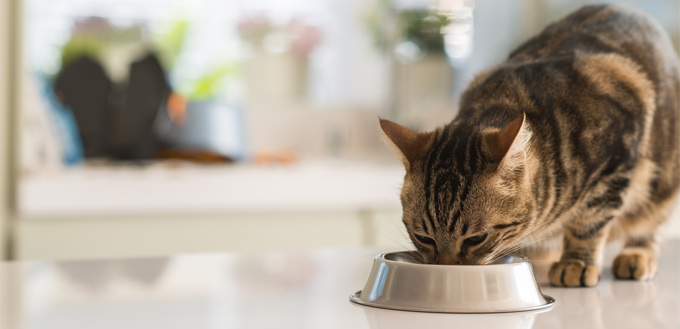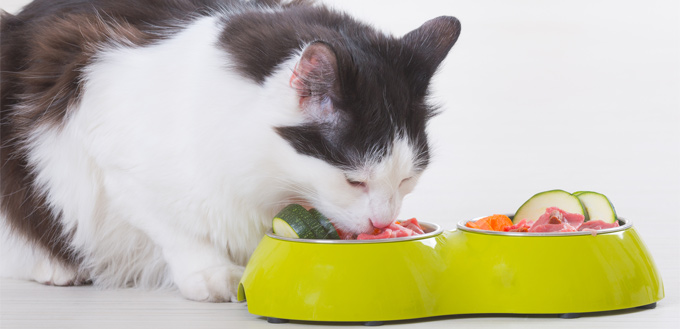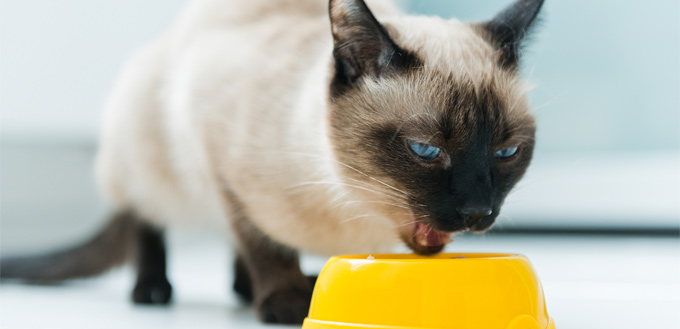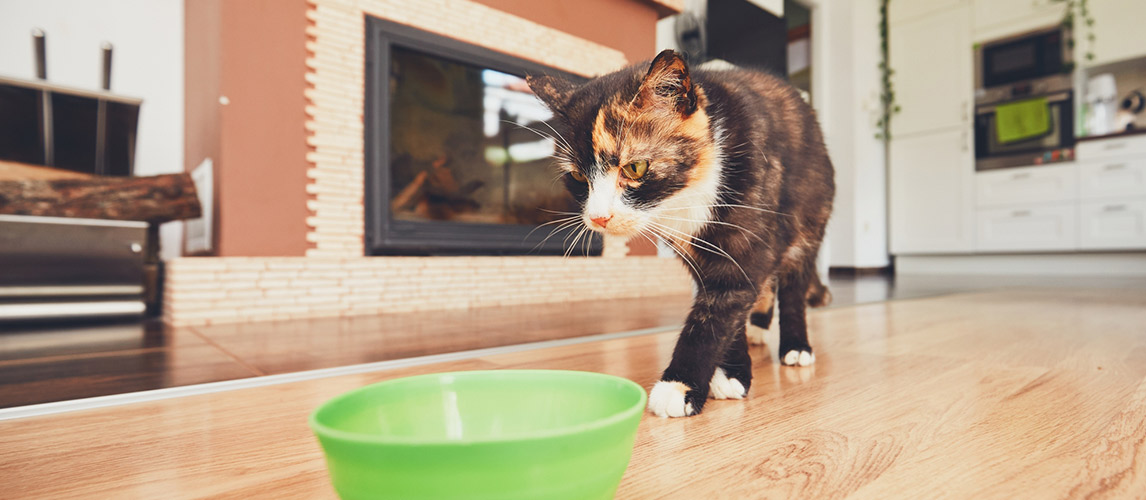You may have heard conflicting stories about fiber in your cat’s diet. Some people believe that they need fiber, while others believe that they don’t. There really isn’t a short answer to this question. It very much depends on your cat’s lifestyle, health, and diet.
What Is Fiber?
Fiber is something you’ve probably heard talk about a lot. It’s very important for humans to have enough fiber in their diets. It’s a type of carbohydrate and is sometimes called roughage, or bulk. While it is a carbohydrate, it doesn’t digest or break down in the same way as other carbs. Other carbs break down into sugar molecules, but fiber goes through our digestive systems almost entirely intact.

It’s usually a plant-based nutrient, but it is crucial for our digestion. As well as aiding nutrition, managing weight, control blood sugars, and maintaining cholesterol, fiber has recently been linked to longer life expectancy, and possibly reducing the risk of some cancers.
- Soluble Fiber
Soluble fiber is soluble in water. When it comes into contact with water, it dissolves. However, when it comes into contact with water within the body, it forms a gel-like substance, which helps slow the digestive process. This is very helpful for weight loss. Foods that are high in soluble fiber include nuts, edible plant skins, and oats.
Related Post: Best Cat Food for Weight Loss
- Insoluble Fiber
Insoluble fiber isn’t soluble in water. It actually repels water. It does add bulk to the stool and helps movement through the digestive system. Insoluble fiber is found in foods like fruit, vegetables, seeds, wheat, and bran.
Our fiber requirements tend to be divided into 75% insoluble fiber, and 25% soluble fiber. We need fiber in our diets to promote gastrointestinal health, to help keep our hearts healthy, help control our blood sugar levels, and help maintain healthy body weight. Essentially, it’s a very important part of our diets and brings so many benefits for us.
But What About Cats?
For years, many believed that cats simply didn’t need fiber. It was believed that they really only needed proteins and fats in their diet. This was only ever partially true. There are a number of factors that are involved in a cat’s need for dietary fiber.
A Cat’s Digestive System
We need to look at the cat’s digestive system before we can examine their need for fiber. A cat has a relatively short digestive system. It’s much shorter than our own, or even that of a dog.
A cat’s digestive system begins at the mouth. When humans eat food, we have a whole range of food designed for different parts of the eating process. We have incisors for cutting food, canines for tearing and holding food, and premolars, and molars for grinding and chewing food. Cats have some of the same teeth, but they don’t have the same flat molars as we have. As a result, they eat their food in bigger chunks and don’t have the ability to chew. As well as the differences in teeth, cats can move their jaws in an up and down motion, they don’t have a side to side chewing action. Humans can move their jaws up and down, as well as side to side. Interestingly, cats don’t have amylase in their saliva. Salivary amylase in other mammals starts the process of breaking down carbohydrates in the mouth.
The food moves from the mouth to the esophagus. The tongue moves the chunks of food towards the throat, then the muscles in the esophagus move it through, down to the stomach. The esophagus is 12 to 15 inches in length, depending on the size of the cat.
The food then passes through a ring of muscles, known as a sphincter, into the stomach. This is where the process of breaking the food down begins. The stomach has an extremely strong stomach acid. It’s strong enough to dissolve bone. The stomach muscles also contract, and this combined with the stomach acid turns the food into a liquid, before it moves on to the next stage of the digestive system.

The liquid mixture passes through another sphincter into the duodenum, which is the first part of the small intestine. A cat’s duodenum is around 10 centimeters in length, whereas a dog’s is around 25 centimeters.
There are two things that happen at this stage.
Firstly, the gallbladder releases bile. Bile is produced by the liver and is then stored in the gallbladder. It breaks up the large fat molecules into smaller fat molecules which are more easily absorbed in the next stage of digestion.
Secondly, the pancreas releases several different enzymes. These enzymes neutralize the acids in the liquid food mixture and help digest the sugars, fats, and proteins.
The food slurry then moves into the small intestine. The small intestine is the longest part of the digestive system. In a dog, it’s around 1.8 to 4.8 meters in length, however, in a cat, it’s only 80 centimeters to 1.3 meters. The small intestine is also where most of the nutrients are absorbed. It’s lined with villi, which is what absorbs the proteins, enzymes, water, and electrolytes.
The remains are then passed on to the large intestine. This is where the last possible nutrients are extracted from the food slurry, and feces is formed. It’s also known as the colon.
Eventually, the fecal matter is passed to the rectum, and out through the anus. The whole process takes around 12 to 24 hours.
This is a relatively short digestive system. A dog, for example, has a much longer digestive tract, with a bigger stomach, designed for larger meals. Cats have evolved to eat little meals, periodically throughout the day. This was also thought to mean that cats don’t need any dietary fiber, as they are built to digest a diet consisting largely of proteins and fats.
The Natural Diet Of A Cat
Cats are obligate carnivores or ‘true’ carnivores. Their natural diet is made up almost entirely of meat. A study published in 2011 estimated the dietary nutrient profile of free-roaming feral cats. The study found that around 63% of the diet was proteins, 23% was fats, but 3% was carbohydrates. These carbohydrates in the diet seemed to have two sources.
First, in the stomach contents of the prey they eat. The study found that most feral cats ate small mammals and birds. These prey animals tend to eat large amounts of vegetation, so when the cat ate an animal, it also ingested whatever the prey had eaten. However, the study also found that the bones, fur, and feathers of these animals are largely indigestible, and may have a similar effect in a cat’s digestion as fibers do in a person’s digestion.
Secondly, a number of cats were observed frequently eating a few strands of grass. There are a few theories on why they do this. It may be to settle an upset stomach, it may be for the folic acid in the grass, or it may be to act as fiber to help aid digestion and act as a natural laxative.

Two Types Of Pet Cat
We can split pet cats into two basic groups – cats who have access to the outdoors, and cats who live exclusively inside. You may not realize it, but these two groups have slightly varying nutritional requirements.
- Outdoor Cat
Cats who live outdoors, or who have some access to the outdoors, generally won’t need a cat fiber supplement. They will probably forage, and hunt, which is where they will get any nutritional fiber needs. They will still need high-quality cat food. Make sure you choose one that is suited for your cat’s age and stage. If he’s under a year old, you’ll need one designed to meet the nutritional requirements of kittens and juveniles. If he’s over seven, then you’ll need more senior food, which will have formulated for those changing needs. You should also look for a food that is made for cats who do spend time outdoors.
Related Post: Best Cat Food for Older Cats
When you’ve chosen a food, you should check what the manufacturer recommends as a feeding portion for a cat who does have outdoor access.
- Indoor Cat
The needs of an indoor cat are a little bit more complex. Indoor only cats tend to be less active than their outdoor going counterparts. This also means that they’re a bit more likely to be overweight. High fiber cat foods are one way to help control your feline’s weight. The fiber in the food can make him feel a bit more full after his meals, which reduces the amount of food he actually eats. If your cat is overweight, you should gradually change him to a food that is high in proteins, fats, and fiber but has low amounts of digestible carbohydrates.
A high fiber cat food can also help your cat maintain a healthy weight. This is especially a good idea if he is prone to weight gain.
High fiber content can also help with hairballs. Indoor cats are prone to hairballs. They spend around four hours per day grooming and can ingest quite a lot of hair. The hair can’t be digested and gathers up in the stomach. The same contractions of the stomach muscles that help digest food also take all these hairs and make a hairball. Generally, these aren’t serious, but they do cause some discomfort. Making sure that the cat has some dietary fiber can help the hairball move through the digestive system, reducing the discomfort he feels.
When you’re selecting a food for your indoor cat, again you need to take his age, stage, and lifestyle into account. If he’s neutered then he may need specialized cat food. If he’s a senior, then you’ll need food that accounts for that.
Related Post: Cat Food for Indoor Cats
- Raw Diet
Some owners prefer to feed their pets a raw diet. A raw diet is designed to emulate the natural diet as closely as possible. You can find commercial raw food manufacturers, but some owners prefer to make their own foods at home. However, it’s important to know that raw diets need to be carefully thought out, planned and balanced. You will also need to feed your cat supplements to balance out his nutrition properly, including a cat fiber supplement. This type of diet should never be undertaken without consideration and consultation with your veterinarian. You should also consider that if there are children, an elderly person, or someone with a comprised immune system, then it is not advisable to feed any animals in the home on a raw food diet.
Cats And Fiber
So, the answer to the question do cats need fiber in their diets isn’t a straightforward one. It really comes down the lifestyle of the cat and his general health. Outdoor cats should get a false fiber from the small animals they hunt and eat, but indoor cats don’t have this opportunity. Indoor cats, especially ones who are overweight, would probably benefit from having a fiber supplement or being moved onto food which is high in fiber. It’s also possible that your outdoor cat isn’t much of a hunter, or won’t eat prey animals as he’s well fed at home. In those cases, you may want to consider adding a fiber supplement to his diet.
Sources:
- G. D. Sunvold, Dietary Fiber For Cats: In Vitro Fermentation Of Selected Fiber Sources By Cat Fecal Inoculum And In Vivo Utilization Of Diets Containing Selected Fiber Sources And Their Blends, Oxford University Press
- Ken Tudor, DVM, Do Cats Need Fiber in Their Diet?, PetMD
- Cat Nutrition Tips, The ASPCA






